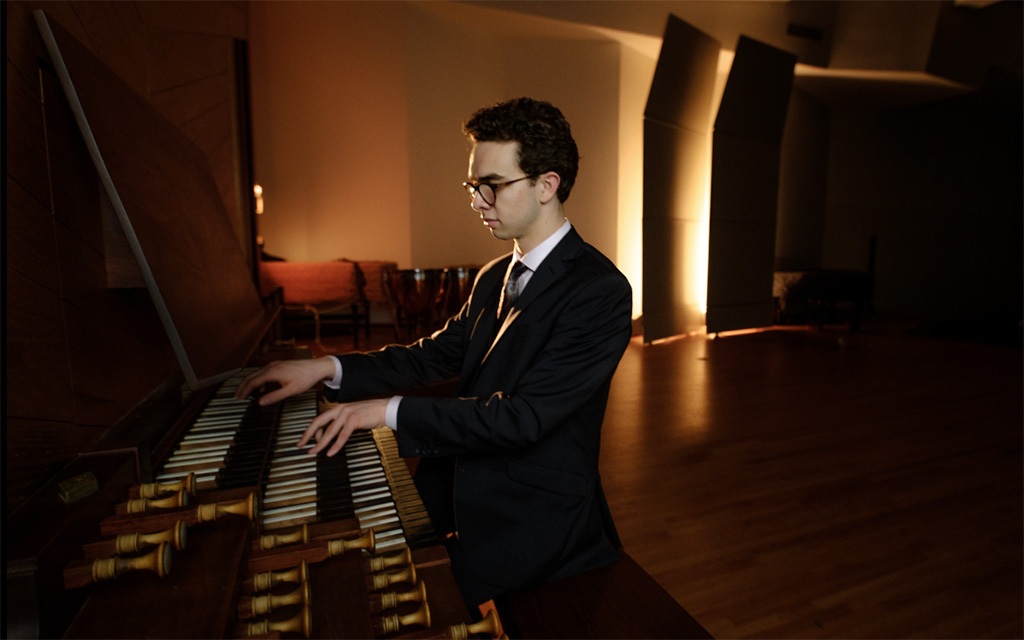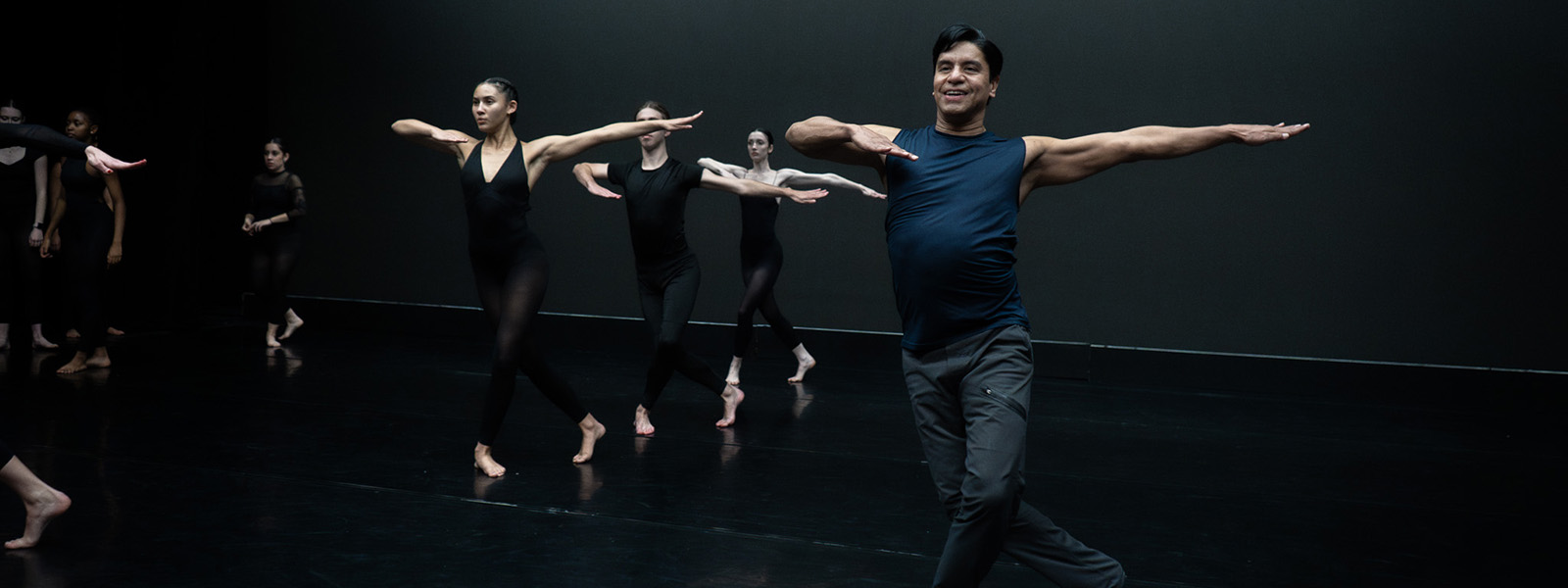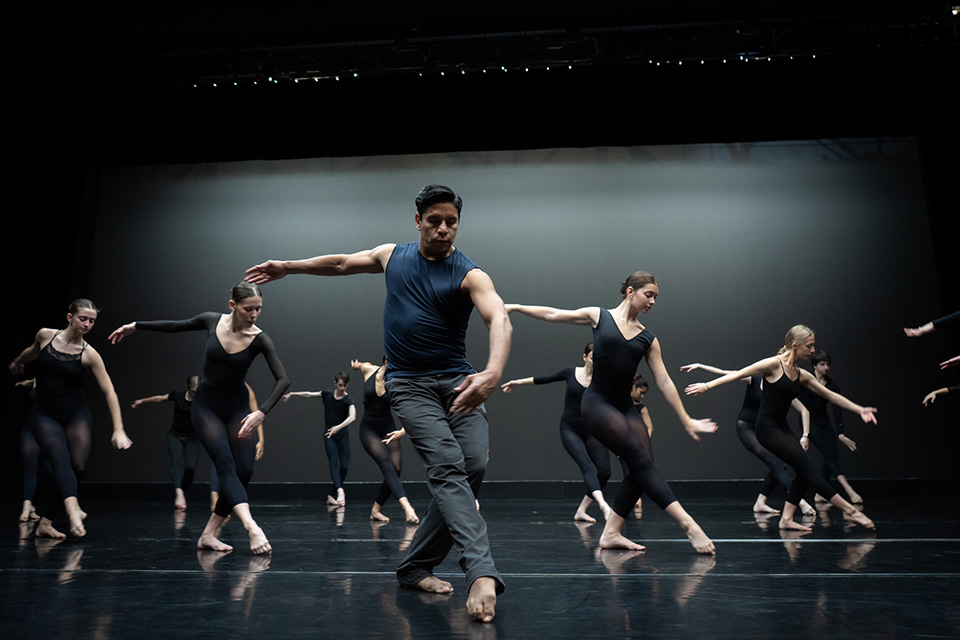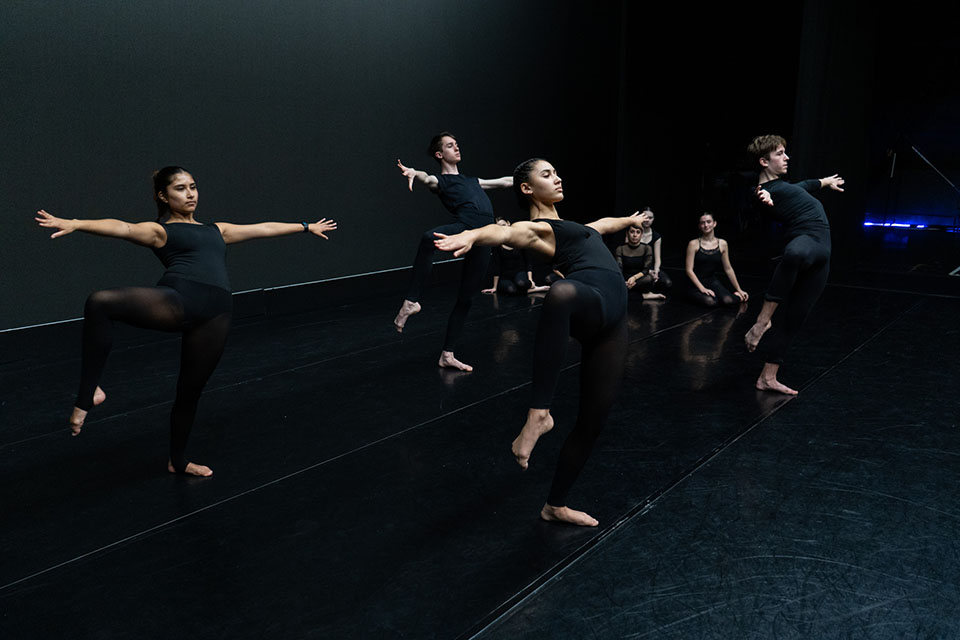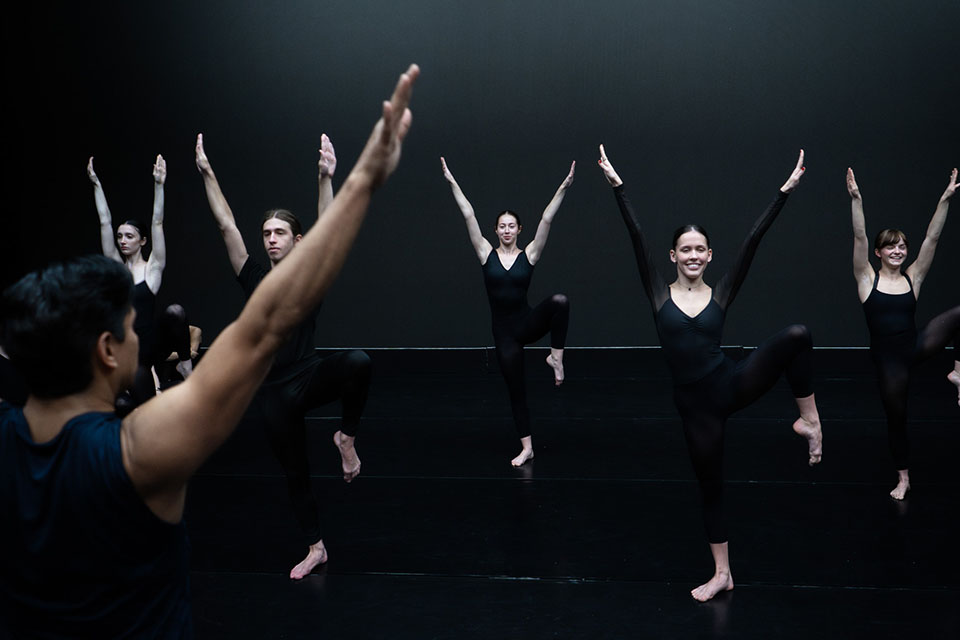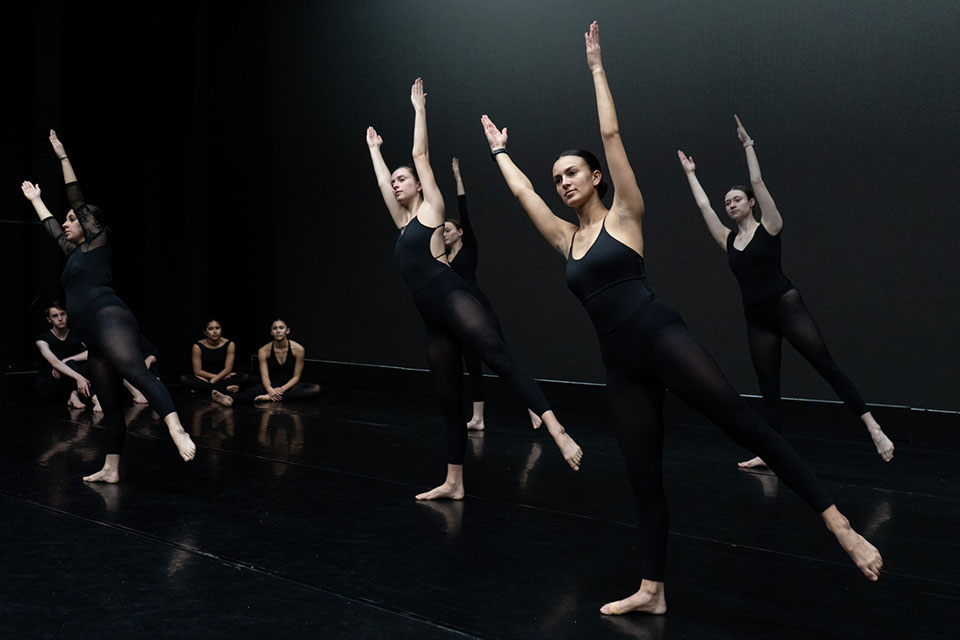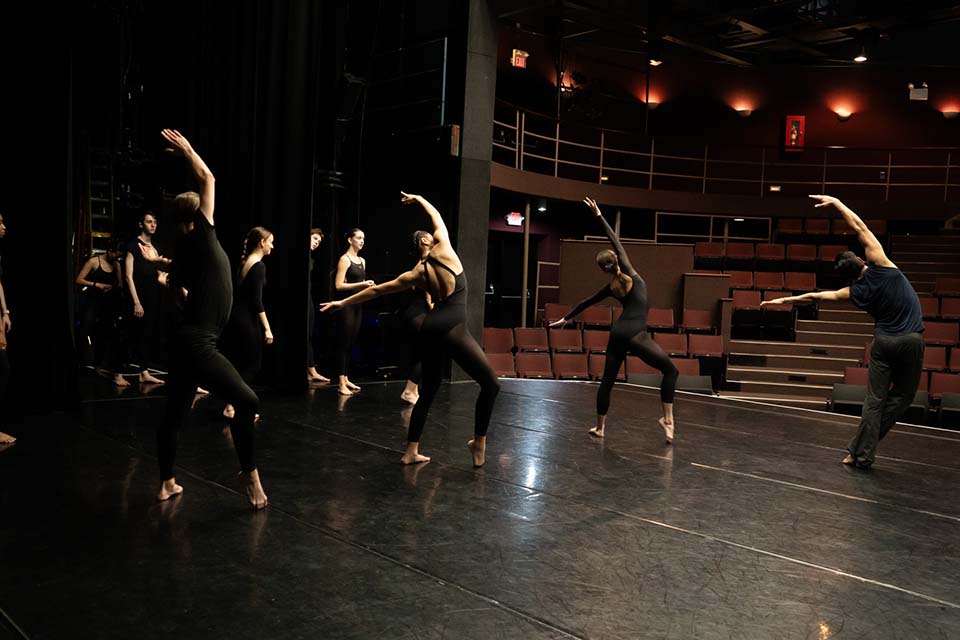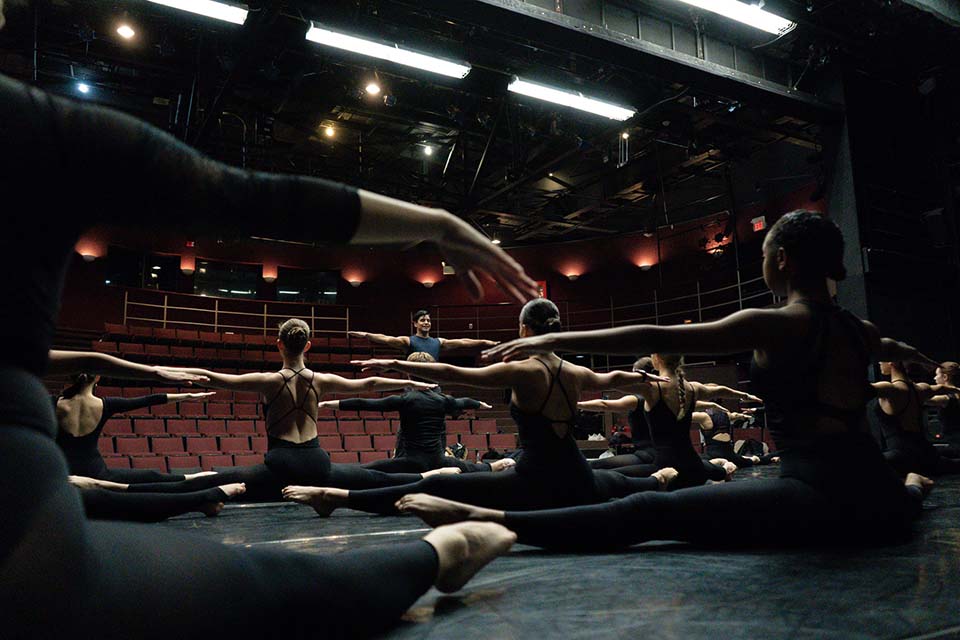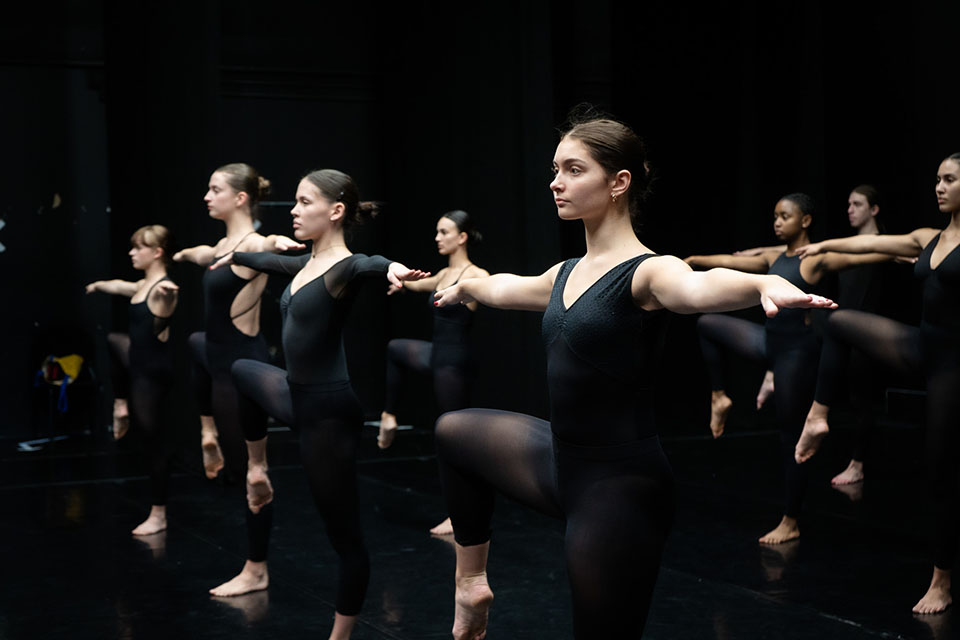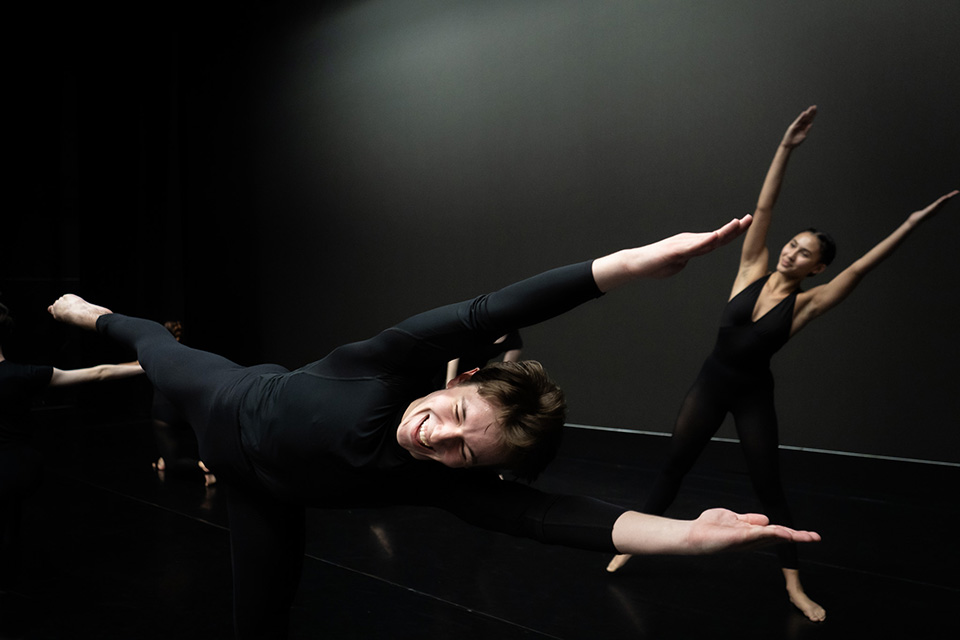Fernando Carrillo strengthens dance curriculum with Horton Technique
Contemporary dancers at UNCSA are adding a sought-after skill to their resumes: the Horton Technique, a method of fortifying the body adopted and taught by modern dance luminaries Alvin Ailey and Carmen de Lavallade. Trained in the technique by creator Lester Horton, Fernando Carrillo, who joined the School of Dance faculty this fall, learned the Horton Technique at the Ailey School in New York City.
Dean of Dance Endalyn Outlaw says the Horton Technique is one of the foundational modern disciplines and an asset to any dancer’s skill set. “With its emphasis on dynamics, clean lines, and the execution of moving through shapes with attack and clarity and a languidness at times, it serves to develop strong, elongated and versatile dancers,” she says. “Additionally, the Horton technique develops musicality, stamina, connectivity and a stabilizing grounded quality to one’s movement.”
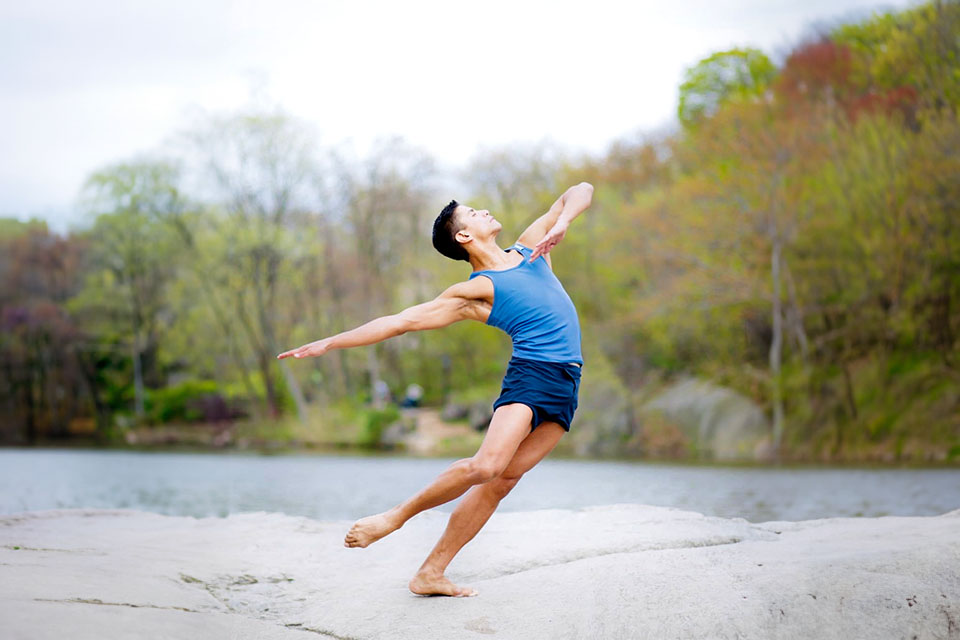
School of Dance contemporary dance faculty member Fernando Carrillo. / Photo courtesy of Carrillo
Carrillo says training in the technique creates versatile dancers who are more competitive in the industry. “In my experience, it is rare that dancers trained in Horton get injured,” he explains. “They can execute and perform a variety of dance styles and master a wide range of choreography because of the versatility in movement the Horton Technique offers”
Carrillo trained at the Ailey School and has taught Horton Technique at schools and companies around the world, including many of America’s most prestigious dance organizations — the Ailey School; the Kirov Academy of Ballet (DC); Juilliard; Jacqueline Kennedy Onassis School at American Ballet Theatre; and Joffrey Ballet School, for example.
From Horton to Carrillo
Horton — a dancer, choreographer and teacher in the 1920s to 50s — once wrote to a dance publicist and author, “I am sincerely trying now to create a dance technique based entirely upon corrective exercises, created with a knowledge of human anatomy; a technique which will correct physical faults and prepare a dancer for any type of dancing.”
According to Carrillo, Horton wanted his technique to be ever-changing and innovative. Only the fundamentals of the technique were codified. “Within the parameters of the fundamentals, teachers can apply their own methodology and create their own pedagogy,” he adds. “Practitioners or teachers can interpret and explore the Horton technique as they wish, as long as the fundamentals that Horton codified exist within their pedagogy.”
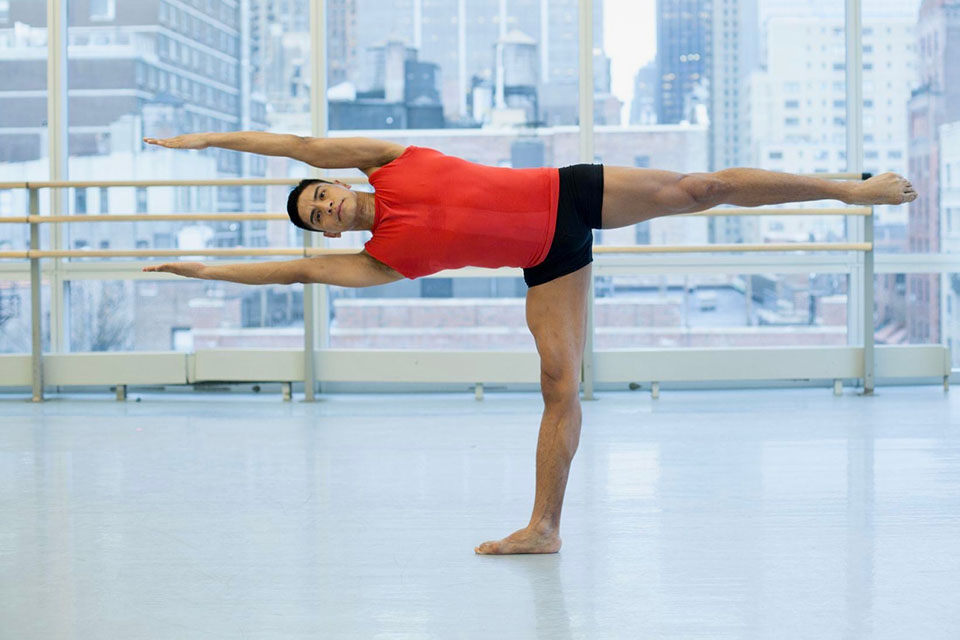
Carrillo practicing Horton Technique. / Photo courtesy of Carrillo
In Horton’s lifetime, New York City was the epicenter of modern dance in America. Horton is credited with bringing the art form to Los Angeles, where he founded the Lester Horton Dance Theater in 1946. One of his leading dancers was Carmen de Lavallade, who later earned a Bessie Award, an Obie Award and a Kennedy Center Honors Award. When Horton died, de Lavallade and Ailey moved to New York, taking the Horton Technique with them. From there it was disseminated throughout the world.
“Coming full circle, Carmen de Lavallade is my main mentor,” Carrillo says. “She chose to mentor me and pass on her knowledge of the Horton Technique which derives directly from Lester Horton when she worked with him in Los Angeles. She has helped me develop as a teacher and mentor of the Horton Technique.”
Coming full circle
Carrillo was first introduced to Horton Technique as a teenager in California by the Lewitzky Company, named for Bella Lewitzky who was Horton’s muse. “He created the technique on Bella Lewitzky’s body,” Carrillo says. Carrillo later studied at California State University, Los Angeles and the Ailey School. He also received an M.F.A. in dance from Hollins University, where his thesis was titled “A Mexican American's Introspective on Identity and Embodiment of the Lester Horton Technique.”
At UNCSA, Carrillo teaches Horton Technique to first- and fourth-year Contemporary Dance students. “They are learning the fundamentals of the Horton Technique, how it developed, how it became so important,” he says. “They are connecting the dots between Lester Horton, Alvin Ailey and Carmen de Lavallade.”
In addition to contemporary dance, he also teaches dance composition and creates choreography in the School of Dance and musical theater in the School of Drama. “Because of my life experience, I have extensive knowledge in many techniques and styles of dance,” he explains.
As an instructor, Carrillo strives to foster a progressive and creative environment for dancers. “I want my students to feel the right to freedom of expression, and I foster the best possible working and learning environment,” he says. “My strength is being able to evaluate a room quickly to act with the proper approach. My approach is that of progressive thinking, building on my awareness that every individual learns in a different way.”
Embodying the technique
Carrillo’s performance career includes the choreography of dance luminaries including Alvin Ailey, Lar Lubavitch, Andre Tyson, Ronald K. Brown and Ann Reinking, among many others.
He has performed with Ailey II, including a performance at Carnegie Hall with Soprano Jessye Norman choreographed by Milton Myers, and the solo “Ready” from Revelations at the 40th Anniversary of Compañia de Ballet de Cuba in Havana, Cuba. Performances with other companies include Ballet Hispanico of NY (AGMA), Metropolitan Opera Ballet and Ballet Folklorico de Los Angeles. Commercial and Broadway performances include the motion picture “Louie - the Movie” (SAG-AFTRA) choreographed by Hinton Battle and Broadway's first national tour of “The Lion King” (Actor's Equity).
Like Horton, Carrillo values the contributions to dance by individuals of diverse backgrounds and cultures. Horton created the first racially integrated dance company in America. “He wanted to give the opportunity to anyone who wanted to dance,” Carrillo says.
Carrillo has choreographed many works, including “Virtual Chromosomes,” performed at UNCSA Fall Dance in September 2023. Premiered at Adelphi University in the spring of 2022, he describes it as an exploration of the science behind finding a vaccine for COVID-19, with dancers navigating patterns and clusters of cells moving through the body.
Another piece of the pie
Carrillo says by offering Horton Training, UNCSA is providing the same training available at the Ailey School in New York. Previously, dancers would need to audition and go to New York to study Horton, and he believes the training can be out of reach for many.
Alumna Dwana Smallwood is one of those dancers who studied Horton Technique in New York during her summer vacations. She became a principal with Alvin Ailey American Dance Theater, where she crossed paths with Carrillo. She shares that she’s excited to hear UNCSA has incorporated the technique into the curriculum, and that Carrillo will be teaching it.
“Horton is in line with what the dance world requires to strengthen dancers’ bodies,” says Smallwood, who founded a nonprofit performing arts center in her native Brooklyn. These days she is focused on choreography, teaching workshops and podcasting about the life of an artist. “It definitely strengthened me,” she says.
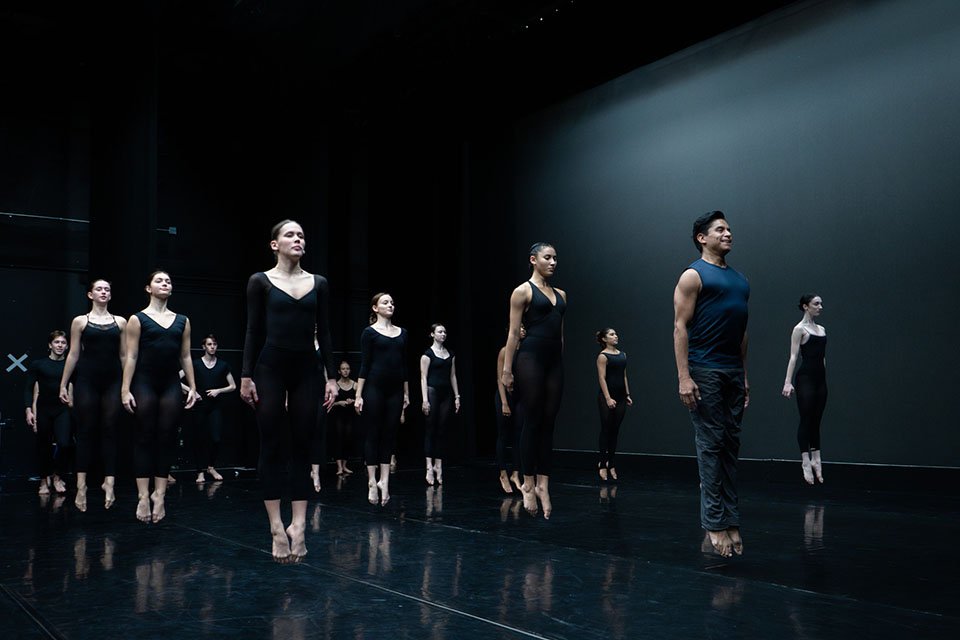
Carrillo teaching UNCSA Dance students. / Photo: Rugile Zemaityte
Smallwood says Carrillo is a welcome addition to a strong faculty. “The School of Dance has always trained beautiful and outstanding dancers who are prepared for anything,” she adds.
Training in the Horton Technique checks an important box for companies seeking to hire dancers, according to Carrillo. “It says this individual is a strong, versatile and fluid dancer who knows how to take care of their body.”
It also signals the dancer’s response to a variety of techniques, Outlaw explains. “Companies looking to hire dance artists would respond favorably because of the many ways they would be able to adapt to other techniques,” she adds.
UNCSA School of Dance is in a class by itself, Carrillo says. “Current and prospective dancers can be confident that this school is bringing in instructors and training opportunities that many institutions cannot offer, in addition to strong academics. Horton Technique is another piece of the pie.”
Having studied at both UNCSA and the Ailey School, Smallwood agrees. UNCSA dancers, she says, “could always fly. Now we can fly blindfolded.”
Get the best news, performance and alumni stories from UNCSA.
SUBSCRIBE TO OUR NEWSLETTERS(OPENS IN NEW TAB)(OPENS IN NEW TAB)(OPENS IN NEW TAB)(OPENS IN NEW TAB)(OPENS IN NEW TAB)
January 10, 2024





